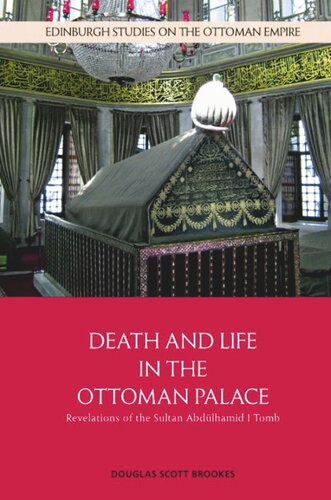

Most ebook files are in PDF format, so you can easily read them using various software such as Foxit Reader or directly on the Google Chrome browser.
Some ebook files are released by publishers in other formats such as .awz, .mobi, .epub, .fb2, etc. You may need to install specific software to read these formats on mobile/PC, such as Calibre.
Please read the tutorial at this link: https://ebookbell.com/faq
We offer FREE conversion to the popular formats you request; however, this may take some time. Therefore, right after payment, please email us, and we will try to provide the service as quickly as possible.
For some exceptional file formats or broken links (if any), please refrain from opening any disputes. Instead, email us first, and we will try to assist within a maximum of 6 hours.
EbookBell Team

0.0
0 reviewsThis book reveals multiple aspects of life in the Ottoman palace, in both its public space (the chancery) and private space (the royal household and the harem). It does so by exploring the Sultan Abdülhamid I Tomb in Istanbul, investigating the paths that open to us through the graves of the royalty in the mausoleum and those of the courtiers, eunuchs, concubines and female harem managers in the garden graveyard around it. The treasure of information at this graveyard allows us to piece together a wide spectrum of details that illuminate the court funerary culture of the era, from architecture and calligraphy to funerals and epitaphs to turbans and fezzes and poetry, as we come to an understanding of the role of royal cemeteries in strengthening the bonds between the reigning House and the populace and enhancing the legitimacy of the dynasty’s rule.
The book first introduces the tomb complex to the reader, interpreting its architecture, art and poetry, before exploring the lives and careers of 65 of the 86 people interred here between the first burial, in 1780, and the last, in 1863. Along the way, it reveals intriguing stories – from that of Sultan Abdulhamid’s daughter Zeyneb, born (against the dynasty’s rules) when he was a prince and raised in secrecy outside the palace until he came to the throne, to that of Prince Murad, exhumed and reburied late one night in 1812. By exploring the history revealed through these life stories, the book sheds light on Ottoman palace life and culture in an era that witnessed the most wrenching changes of modern Ottoman history seen until then – the reforms forcibly introduced by Sultan Mahmud II after 1826 – and uncovers manifestations of these changes in this graveyard.